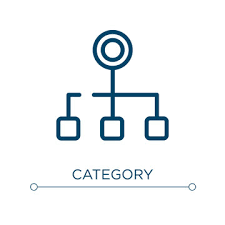The Importance of Categorization in Organizing Information
In the realm of information management, categorization plays a crucial role in structuring and organising data. By grouping similar items together based on shared characteristics or attributes, categorization facilitates easier navigation, retrieval, and understanding of information.
Benefits of Categorization
One of the key benefits of categorization is that it simplifies complex information by breaking it down into manageable chunks. This not only aids in better comprehension but also enhances efficiency in locating specific pieces of data.
Types of Categories
Categories can take various forms, such as hierarchical categories that show relationships between different levels of classification, or non-hierarchical categories that group items based on common features without a structured order.
Applications in Various Fields
Categorization finds applications across diverse fields, including library science, e-commerce, data management, and more. In libraries, books are categorised according to genres and subjects for easy browsing. Similarly, e-commerce platforms use product categories to streamline the shopping experience for customers.
Challenges in Categorization
Despite its benefits, categorization poses challenges such as defining clear criteria for classification, dealing with overlapping categories, and ensuring consistency in assigning items to appropriate categories.
Conclusion
In conclusion, categorization serves as a fundamental tool for organising information effectively. Whether it’s arranging books in a library or structuring digital content online, the process of categorisation enhances accessibility and comprehension. Embracing best practices in categorisation can lead to streamlined workflows and improved user experiences across various domains.
Effective Strategies for Categorising and Organising Your Items
- Organize your items into specific categories to easily find what you need.
- Use descriptive category names to make it clear what each group contains.
- Regularly review and update your categories to ensure they remain relevant.
- Consider creating subcategories to further refine your organization system.
- Utilise colour coding or labels to quickly identify different categories at a glance.
Organize your items into specific categories to easily find what you need.
To streamline the process of locating essential items, it is advisable to categorise your belongings into specific groups. By organising your possessions into distinct categories based on their similarities or functions, you can significantly enhance your ability to quickly and efficiently find what you need. This method not only simplifies the search process but also promotes better organisation and clarity in managing your belongings.
Use descriptive category names to make it clear what each group contains.
When categorising information, it is essential to use descriptive category names that clearly indicate the contents of each group. By employing specific and meaningful labels for categories, users can easily understand what type of information is housed within each classification. Clarity in category names enhances navigation and retrieval processes, ensuring that individuals can swiftly locate the data they are seeking without confusion or ambiguity. A well-defined naming convention for categories not only simplifies the organisation of information but also contributes to a more user-friendly and efficient system overall.
Regularly review and update your categories to ensure they remain relevant.
Regularly reviewing and updating your categories is essential to ensure they stay relevant and effective in organising information. Over time, the nature of data may change, new trends may emerge, and user preferences may shift. By staying proactive in revisiting your categorisation system, you can adapt to these changes, maintain accuracy, and enhance the usability of your information structure. This practice not only helps in keeping content organised but also ensures that users can easily navigate and find what they are looking for efficiently.
Consider creating subcategories to further refine your organization system.
When structuring your organisation system, it is advisable to consider creating subcategories to enhance the refinement of classification. Subcategories allow for a more detailed breakdown of information, enabling a deeper level of organisation within broader categories. By utilising subcategories, you can create a more granular and comprehensive structure that aids in efficient navigation and retrieval of specific data points. This hierarchical approach to categorisation not only enhances the clarity of your organisation system but also facilitates a more streamlined and intuitive user experience for accessing information.
Utilise colour coding or labels to quickly identify different categories at a glance.
To enhance the efficiency of categorisation, a useful tip is to employ colour coding or labels to swiftly distinguish between various categories with just a quick glance. By assigning specific colours or labels to different categories, individuals can streamline the process of identifying and sorting information, making it easier to navigate and organise data effectively. This visual cue not only accelerates the recognition of categories but also aids in maintaining consistency and clarity in classification systems.




